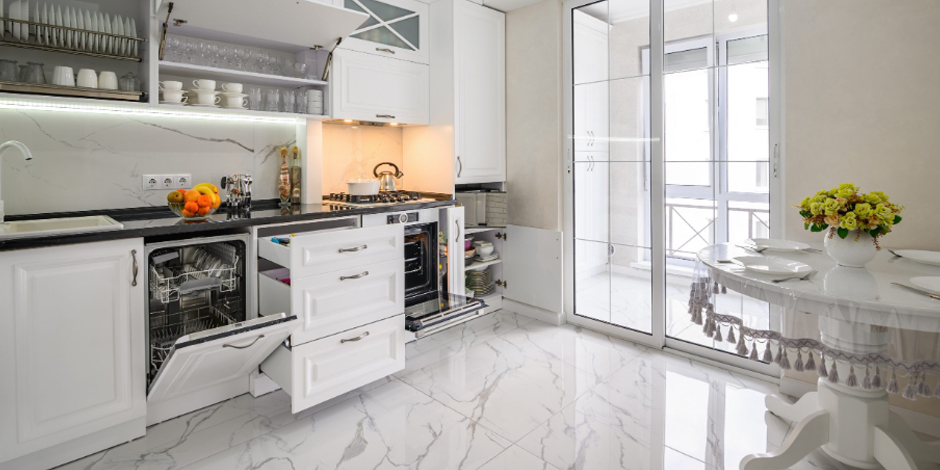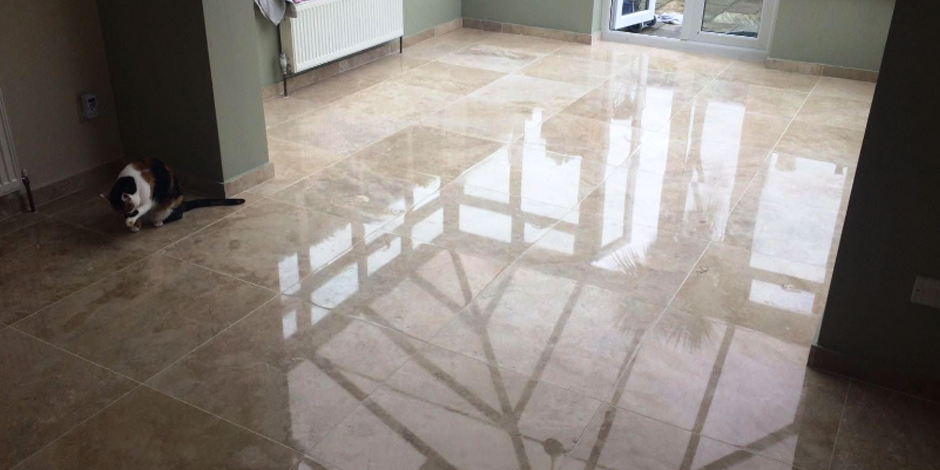Marble is a highly popular material for home surfaces such as flooring, countertops, tabletops, and many others. Its popularity is largely due to the fact that it enhances the aesthetic value of home interiors with its natural beauty and high-quality finish. This elegant stone is not only durable but also easy to clean, thanks to its smooth surface that doesn’t allow dirt to accumulate in crevices or cracks.
However, despite its many advantages, marble has one significant drawback: it is prone to scratches. No matter how careful you are around it, you will likely find new scratches etched into the surface from time to time. This is because marble is a relatively soft stone, and it can be easily scratched by sharp or abrasive objects.
To maintain the elegant appearance of marble surfaces, it is essential to take precautions to prevent scratches. For instance, you can use coasters or mats to protect tabletops and countertops from scratches caused by utensils or other sharp objects. It is also advisable to clean marble surfaces regularly using mild cleaners that won’t damage the stone’s surface. Additionally, you can consider sealing your marble surfaces to protect them from stains and scratches.
In summary, marble is an excellent material for home surfaces due to its natural beauty, durability, and ease of cleaning. However, it requires proper care to prevent scratches and maintain its elegant appearance. With the right care, your marble surfaces can last for many years, adding timeless beauty to your home.
Don’t panic if you notice a new scratch on your marble surface today. For minor scratches, you can easily remove them yourself with the following step-by-step guide. However, if the scratch is deeper, you may need the assistance of Colonial Stone and Floor Care:
Step 1: Prepare a mixture of warm water and mild soap
To effectively remove the scratch from your marble surface, it’s essential to prepare the surface beforehand. Begin by cleaning the marble surface thoroughly using a mild soap and warm water mixture.
To create the cleaning solution, take a cup of warm water and slowly add in a mild dish soap until it becomes bubbly. Avoid using abrasive cleaners or harsh chemicals as they can damage the marble’s surface and cause discoloration. Instead, choose a gentle detergent to ensure that your marble remains in pristine condition.
When cleaning the marble floor surface, be sure to use a soft cloth or sponge to prevent any scratches or damage. Gently wipe the surface, paying extra attention to the area around the scratch.
By taking the time to properly clean your marble surface, you’ll be able to effectively remove the scratch while keeping the rest of the surface in excellent condition.

Step 2: Rub with the mixture using a damp cloth
After preparing the mild soap and warm water mixture, the next step is to use a damp cloth to apply it to the scratched area. Begin by soaking a clean cloth in the mixture and wringing it out thoroughly to remove any excess water.
It’s important to ensure that the cloth is just damp and not soaking wet to prevent any water damage to the marble surface. Gently rub the damp cloth on the scratched area, making sure to apply even pressure and avoid scrubbing too hard.
As you rub the cloth on the scratched area, you should notice the scratch starting to fade away. Continue to rub the area for several minutes, and periodically check the progress to see if the scratch is still visible.
By using a damp cloth and the mild soap and water mixture, you’ll be able to effectively remove the scratch without causing any further damage to your marble surface.
Step 3: Rinse and buff
Once you’ve finished rubbing the scratched surface with the damp cloth and soap mixture, it’s time to rinse and buff the area. To do this, take a separate clean cloth and soak it in warm water, making sure to wring it out thoroughly to achieve a damp state.
Use the damp cloth to rinse the soapy residue from the marble surface, making sure to remove all traces of soap. Then, take another clean cloth, this time a dry one, and use it to gently buff the surface in circular motions.
Buffing the surface will help to remove any remaining soap residue and bring out the natural shine of the marble. Take care not to use too much pressure or abrasive cloths, as this can cause further damage to the surface.
By following these steps, you’ll be able to remove minor scratches from your marble surface and restore its natural beauty. Remember to take your time, use gentle materials, and avoid harsh chemicals to keep your marble in the best possible condition.

Step 4: Polish
As a final touch to remove any remaining scratches and restore the shine of your marble surface, it’s recommended to use a reputable stone-polishing product. Follow the instructions provided by the manufacturer and apply the product to the surface of the marble.
Polishing will help to buff out any remaining scratches and bring out the natural shine of the marble. You can also try polishing the surface using fine-grain sandpaper. To do this, use the sandpaper to gently buff the surface in circular motions.
When using sandpaper, it’s essential to be gentle and avoid applying too much pressure, as this can cause further damage to the surface. It’s also essential to use a fine-grain sandpaper, as a coarser grit can cause deep scratches that are more challenging to remove.
By using a reputable stone-polishing product or fine-grain sandpaper to polish the surface of your marble, you can achieve a smooth and shiny finish, giving your surface a brand new look.
- Prevent Scratches in the Future: While it may be challenging to prevent all scratches on your marble surface, there are several precautions you can take to reduce the likelihood of them occurring. One of the most effective ways to prevent scratches is by exercising caution when using the surface.
Avoid placing heavy or sharp objects on the surface and use coasters and placemats to protect against spills and stains. Also, avoid dragging heavy items across the surface, as this can cause scratches.
Another way to prevent scratches is by applying sealers and protective coats to the surface. These products help to create a protective barrier, making it more difficult for scratches to occur.
Regular maintenance is also essential for preventing scratches. Clean the surface frequently using mild soap and water, and avoid using abrasive cleaners or harsh chemicals. Additionally, avoid using acidic products, such as lemon juice or vinegar, as they can cause etching on the surface.
By taking these precautions and properly maintaining your marble surface, you can reduce the likelihood of scratches occurring and keep your surface looking beautiful for years to come.






 Content Writing
Content Writing Video Marketing
Video Marketing Graphic Design
Graphic Design Lead Magnet Creation
Lead Magnet Creation Content Marketing
Content Marketing